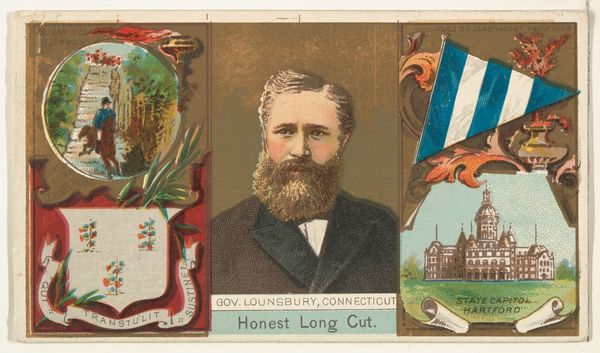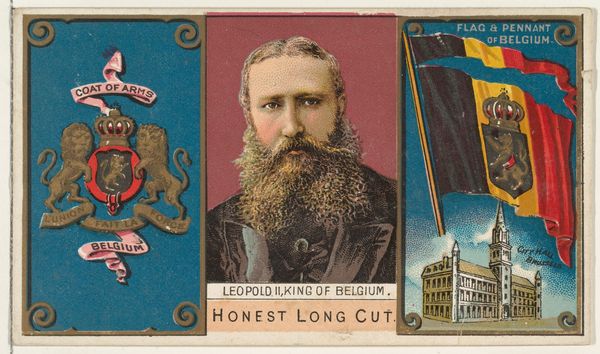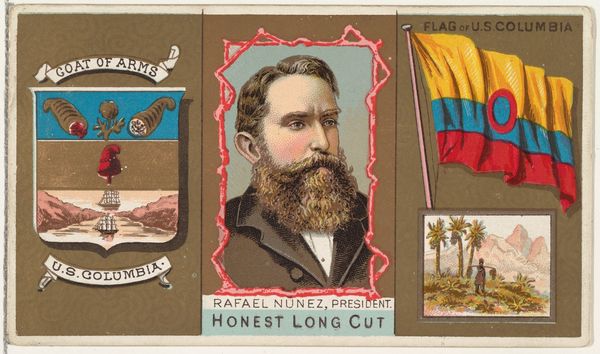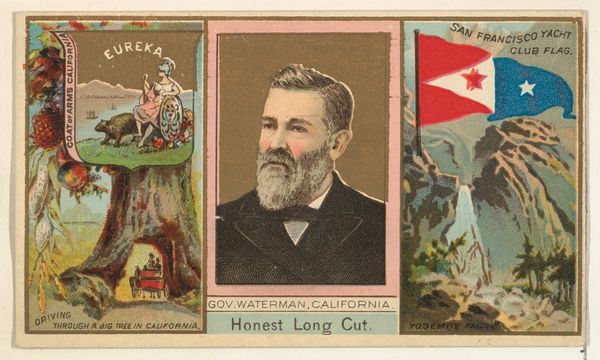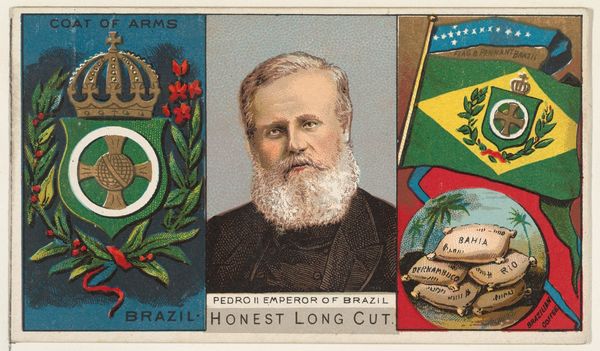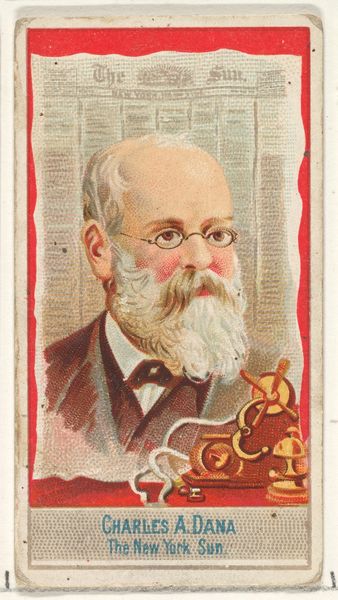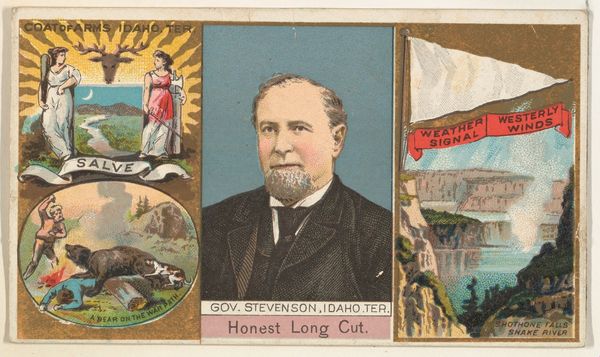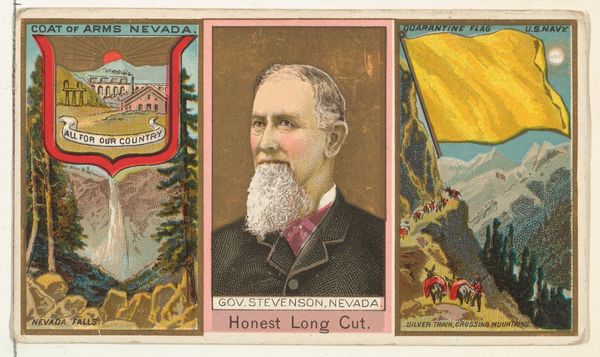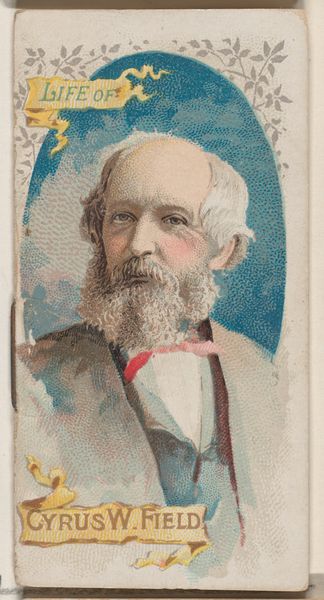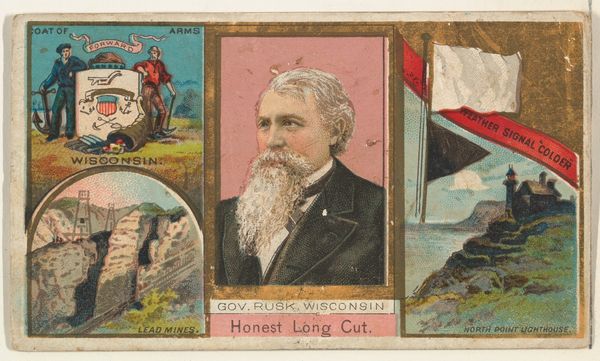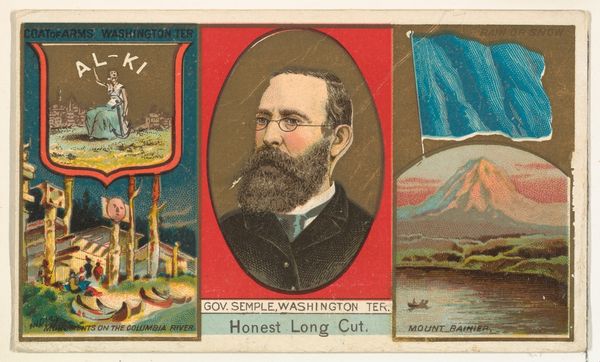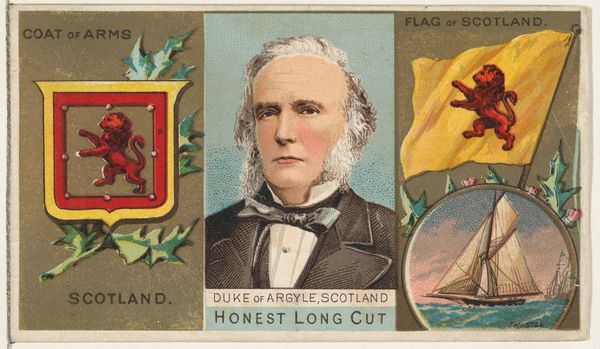
Luitpold, Regent I of Bavaria, from the Rulers, Flags, and Coats of Arms series (N126-1) issued by W. Duke, Sons & Co. 1888
0:00
0:00
Dimensions: Sheet: 2 1/2 × 4 5/16 in. (6.4 × 11 cm)
Copyright: Public Domain
Curator: This intriguing print, dating to 1888, presents Luitpold, Regent I of Bavaria. It's part of the "Rulers, Flags, and Coats of Arms" series issued by W. Duke, Sons & Co. The piece is currently held in the collection of the Metropolitan Museum of Art. Editor: My initial impression is one of unexpected juxtaposition. We have, side by side, formal heraldry, a meticulously rendered portrait, and what appears to be… a jovial beer advertisement tucked in beside the Bavarian flag. The contrasts of color, texture and overall symbolic register intrigue me. Curator: The image reflects the social context of late 19th-century advertising. These cards were inserted into cigarette packs as a marketing strategy, meant to capture a wide audience through depictions of recognizable symbols of power and national identity—with a hearty dose of cultural branding through beer. Editor: Structurally, I see a tripartite division that emphasizes balance but not symmetry. The left and right panels employ ornate patterns and contrasting geometric shapes to contain graphic details, acting as visual foils to the more straightforward, though still stylized, portrait in the center. Luitpold himself is presented with meticulous detail—observe the layering and soft gradations that describe his beard— which makes the caricature below all the more conspicuous by way of contrast. Curator: Absolutely. Luitpold's regency was a complex period in Bavarian history. This print provides insight into how authority and Bavarian identity were being actively constructed and circulated within the context of expanding consumer culture and national sentiments. Tobacco companies profited greatly through appeals to these rising national feelings. The "honest long cut" branding cleverly tied tobacco consumption with national pride. Editor: So the very materiality—paper, print, the ephemeral nature of a cigarette card—becomes critical. What strikes me further is the arrangement, how these graphic elements create not just a portrait of a man but a carefully composed statement about power and its symbolic echoes throughout society. The composition becomes an argument, albeit a subtle one, about national character, status and even modes of visual representation during its time. Curator: In many ways it presages how imagery functions today, where consumer culture and politics intertwine to craft narratives about who we are and what we value as a society. Editor: Indeed, its layered design compels one to recognize not only Bavaria’s history as embodied by one ruler, but the very strategies used to propagate his image. It prompts a broader inquiry into image making’s role within cultural imagination and its construction of societal values.
Comments
No comments
Be the first to comment and join the conversation on the ultimate creative platform.

